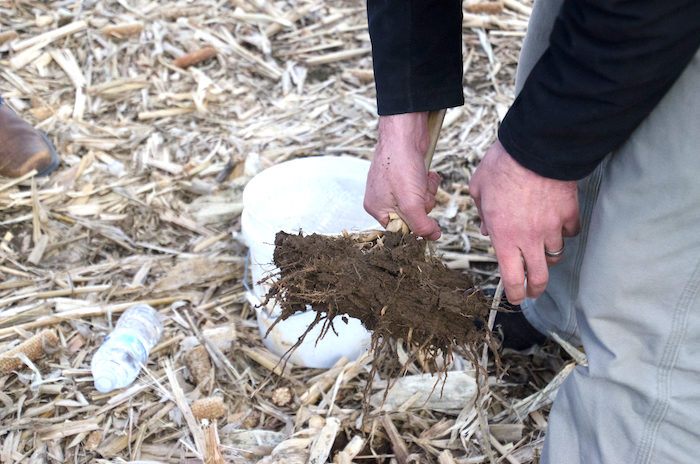The purpose of a soil test is to provide guidance in fertilizer application. Soil test results help you fine-tune your nutrient management practices based on real data, and ultimately protect your bottom line. However, there are a few key components to getting the soil test right.
1. Take a good representative sample
Getting an accurate picture of the soil test values in a field is critical for making the right decisions on fertilizer application. Be sure to plan out where and how many cores you’ll take to represent your field. Even for grid sampling, you’ll need multiple cores to ensure the soil test value is representative for the area you are sampling.
2. Pay attention to soil moisture
Wet or very dry soils can make sampling by hand difficult and can result in an uneven sampling depth. Soil test recommendations are calibrated to a specific depth, so time your sample for accuracy.
3. Choose tests which will provide the best information
When submitting soil samples there are many options for tests to analyze your soil. Look for options that provide relevant data for Minnesota. For most crops in Minnesota, that means an analysis package which includes phosphorus, potassium, soil pH, and zinc. If soil pH is 7.5 or higher, run the Olsen P test versus the Bray-P test, which is unreliable for high pH soils. Remember that different chemical extractions measure different forms of nutrients in soil. Don’t use soil test interpretations from one chemical test with soil test values for a second test.
4. Avoid fields with recent fertilizer or manure application
Sampling too soon after manure or fertilizer application can result in unreliable results. Manure can contain nutrient forms that aren’t available to the plant but dissolve and show up in a soil extraction solution. Partially reacted fertilizer granules can inflate results and overestimate availability of nutrients.
5. Use your soil test report to better manage inputs
The soil test is one of your most important tools in managing profitability. The data provided in the soil test can show areas that may have been under fertilized or areas where nutrient supply is enough. Soil tests are a probability function. The more a nutrient is present in the soil, the lower the impact of added fertilizer. Use the soil test as your road map to decide where best to invest money in your crop.






